The more diverse a meadow is, the more stable its identity. That makes sense to us. But what shapes our identity as human beings, and what role does diversity play? A Goethean scientific approach offers a deeper understanding of this. Insights from the Natural Science Section’s Evolving Science 2024 conference.
The air is invigorating and filled with that wonderful smell of fallen oak leaves crunching underfoot. As I climb the hill to the Goetheanum, all around me, greens are diversifying into golds and rusts under a glorious blue sky. Autumn and the Natural Science Section Herbsttagung have arrived!
Inside the Schreinerei, we warm up. Old friends laugh and hug; smiling new ones get introduced. Over 100 people are here, from all over the world—scientists and quite a few non-scientists. “I just want to understand our world better,” a woman tells me. We’ve come to Evolving Science 2024 to explore the theme “Diversity Strengthens Identity.” In a truly Goetheanistic way, we’ll consider it from many perspectives: scientific, artistic, and social.
It takes the fiery enthusiasm of one of the Section leaders to get us to finally sit down. “I’m Vesna, with the unpronounceable last name,” she laughs, and the two Section leaders, Vesna Forštnerič Lesjak and Matthias Rang, welcome us like one big, rather happy family.
The Descent into Separation
We look at the Letter to Members from October 12, 1924, in which Rudolf Steiner describes the evolution of human thinking as a descent, from a time when thoughts were experienced as real spiritual beings—thoughts felt given to us—to our times, when thoughts are “my” thoughts, my creations. This path to total separation from the thought-being of the world was necessary, Steiner says, for us to develop freedom. But it has isolated us from nature. I think we feel this separation, in different ways, as a profound longing.

In the quest to reunite the human soul with the soul in the world, Goethean Science, or Goetheanism, isn’t intended to be an alternative to conventional science but an enhancement—a way to take the next step in the evolution of thinking. Can we lead science into the realm of living thoughts, to “think” life? Matthias Rang describes this as a science guided by the Sun. It’s a beautiful picture: the warmth and light we’ve received from the Sun for so long, shining now from our souls back into the world. It points to the possibility of bringing our feeling, which connects us to the world, into right relation with our thinking, which understands the world. Then, our thinking becomes a way of seeing. And if this is so, the thoughts we create—like the seeds from which a tree grows—will give spirit a place to act in the world. A Sun-led science is what Goethean scientists strive for.
Standing In the Tension
A young Italian scientist puts the image of a crystalline formation up on the screen and enthuses about how beautiful they are and how much she loves working with these crystals—how delicious it feels, like her grandmother’s cake. A man in the audience raises his hand. “I’m sorry, but is this science? It’s so subjective.” She looks confused. He walks to the stage and takes the beamer control from her. “This is science,” he says and proceeds to analyze graphs and charts while she looks on incredulously. Who says scientists don’t have a sense of humor?
Paul Doesburg and Greta Guglielmetti work with picture-forming methods—a scientific approach to qualitative assessment of substances, introduced by Ehrenfried Pfeiffer in collaboration with Rudolf Steiner. The back-and-forth between qualitative evaluation and quantitative computer analysis creates a tension that Paul and Greta experience strongly, and yet welcome, in their work. Their little skit brings the point home: we can go too far in either direction.
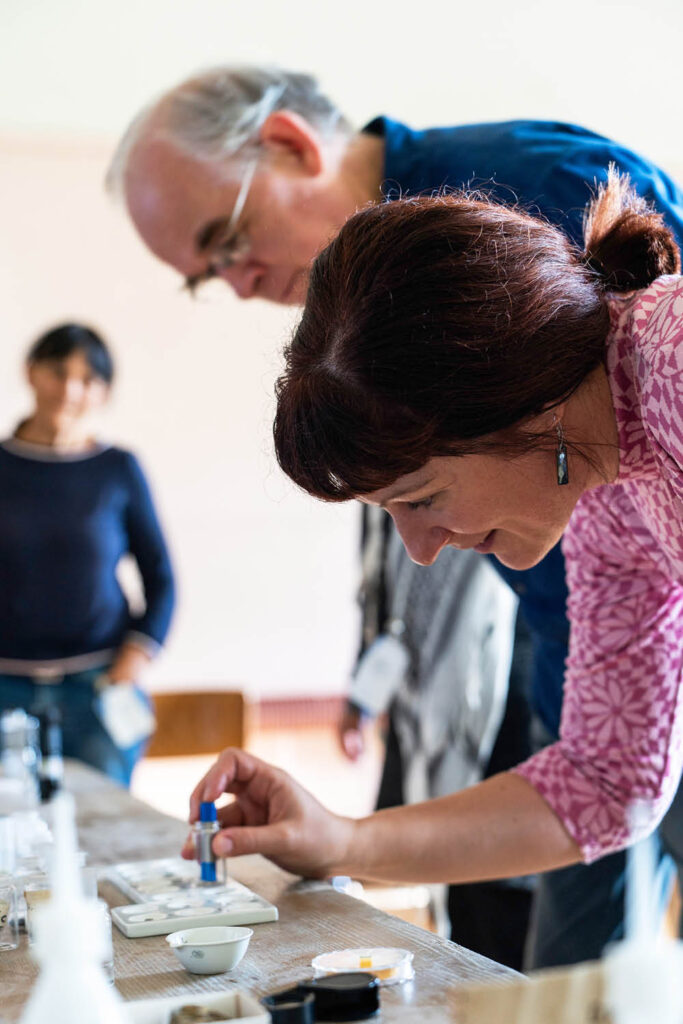
There’s a similar tension in biodynamic researcher Jürgen Fritz’s work with the preparations. He’s found that the preps have a positive effect in the soil similar to the inoculation of plant growth-promoting microbes (PGPMs.) We need this kind of research, but there’s a danger of reducing the preparations to mere chemical soil inoculants, leading to the same dead end: no connection to the context. Biodynamic farmer Stewart Lundy has a keen sensitivity to how his preparations capture his specific locality and, therefore, enhance the unifying principle on his farm. At the same time, he works at the Josephine Porter Institute, which produces high-quality preparations that are distributed nationwide—a real paradox for him.
A participant who is new to Goethean Science politely asks: “But how do you all reconcile this?” Perhaps by standing in the tension and engaging it creatively. These challenges may be the encounters that strengthen those seeking a Sun-led science—tension might not be a problem but an indicator that we are on the right track.
Where Does the Oak End?
With a single oak leaf, biologist Craig Holdrege takes us into what it means to do Goethean Science. We observe, we see more and more details, and when we recreate the leaf accurately in our imagination, we start to feel with it and not just think about it. But every oak leaf is different! What makes it “Oak,” then? And what makes this diversity into something meaningful and not just a pile of differences? We have to observe the leaves where they live, on the Oak itself, to grasp this. We find that everything surrounding a living leaf—the elements, other leaves, trees, insects, weather, seasons, sun, and shade—is reflected in its growth and shape. We “read” the surroundings in the leaf. Same with the tree. They are affected by and, in turn, are affecting everything around them. Every creature is utterly itself and completely, inextricably part of everything else.
The “surroundings” include what’s beneath our feet. Jürgen Fritz situates the preparations within the context of the plant and cosmos through the microbiome. We learn from biologist and artist Florianne Koechlin that above ground, every plant “communicates” using specific aromas with other plants and animals, and below ground, every plant has a specific root microbiome that communicates with all other microbiomes. Although it’s a challenge to find a Goethean approach to the underground realm of the “microbiome,” this still offers a beautiful picture of the absolute interconnectedness of all things. Later, a friend tells me this brought the whole conference together for her. Why, I ask? Because it’s all about communication, she says.
Jan Albert Ripens points out that seeds fall differently—some float, some spin, some drop. Even in death, there is a unique relationship to the elements. I know this from my research: different colored leaves decompose differently. Each fallen seed and leaf is a message from the cosmos for the soil to interpret and communicate to next year’s growth. Stewart Lundy puts it this way: the cosmos becomes the plant, which then goes back to the cosmos in a different form. Over time, this is not dead repetition but evolution, which, as paleontologist Susanna Kümmell points out, is a formative influence in shaping identity.
But how does the diversity and identity that we find in plants live in us? Not just in our gut microbiome—that’s not what I mean. Where, exactly, are we different? Or, as one participant asks, “What is the shaping context for a human being?” It’s too easy to give abstract answers—I want to understand this as an experience. We get that opportunity in the work we do together.
Making Space for the Third
In one working group, we find the story of an ecosystem that dies and is reborn through fire in every detail of Katherine Buchanan’s South African plants: resinous buds, paper crisp leaves, fiery explosions of color. We discover the watery realm in Simon Charter’s conch shells: spirals, ripples, and vortices. Amazing. Water forms, delicately rendered in calcium by tiny creatures—which was shaping which? Here, we touch the heart of Goethean science, where the essence of things is revealed in the details.
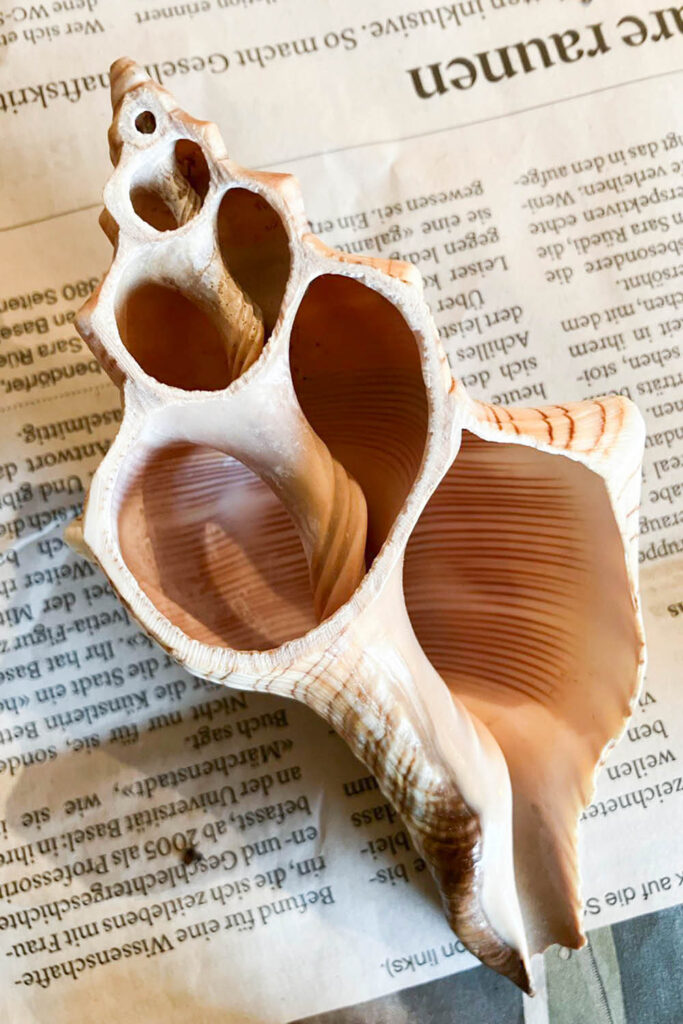
Picking up a fist-sized ball of clay, we close our eyes. “Remember a time when you felt you received thoughts. Work the clay with that feeling,” Katherine tells us. Fingertips press lightly as if listening. Then, a second ball of clay: “Remember a time when you felt the thought was yours, that you created it.” Palms pound the ball. And then, with a third ball, she suggests we do both. I notice: I’m no longer one or the other—I’m the one who senses just how much shaping and then just how much listening is needed. It’s a feeling for rightness in the moment. A shape arises from the clay reminiscent of the seashells—beautiful and yet totally new. Now, we’ve made space for the one who lives between extremes—the one who can give spirit a place to act on Earth.
Where Does the Heart End?
Phillip Kilner starts his workshop by asking: where do we observe our heart? Oh? We feel our chests for the reassuring bump, bump. We touch our wrists. Where else? Skin color, temperature, “pins and needles,” eyeballs. We study resin casts and electron microscope pictures. We listen to water pulse in a flow-form and feel the pressure it takes to push fluid through tubes. It all prepares us for the living image that arises when Phillip shows us how blood flows through his body. He moves his hands slowly—from unity in the chest to differentiation at the extremities—from deep inside receiving life from the breath, to the edges of the body receiving sensations from the cosmos. Our heart: listening and responding to everything around us and within us—simultaneously.
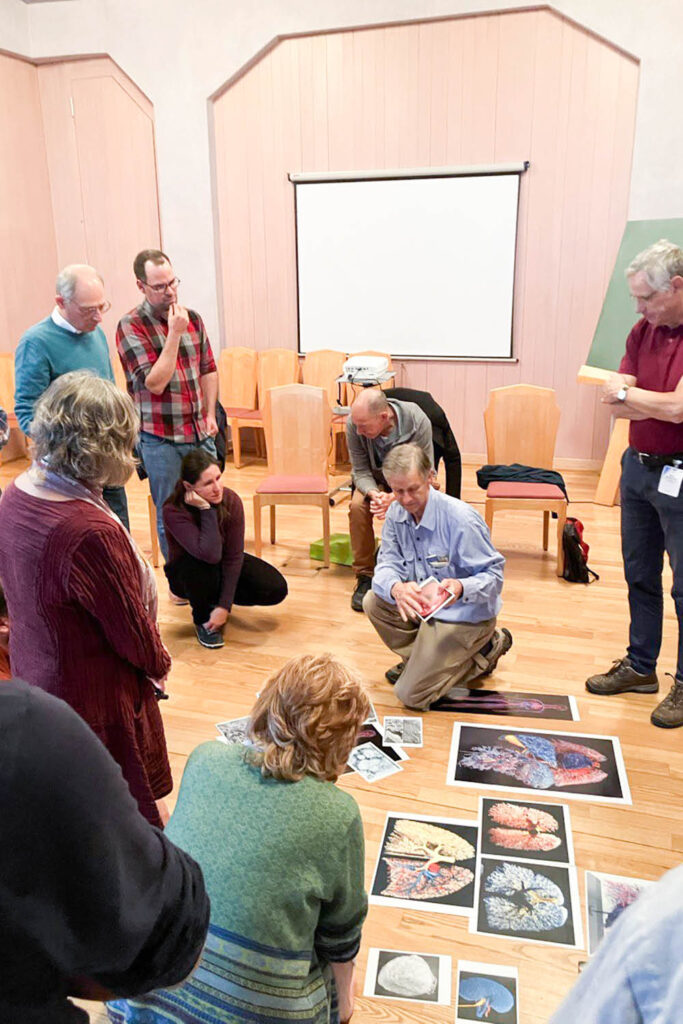
With a lot of warmth, laughter, and the gracious help of Robert Wroblewski, Sandra Lo Noce-Wagner, and Gotthard Killian, in the evenings, we collaborate to move our souls with color and tone. Here, we are all the same—scientist, non-scientist: it doesn’t matter when you are stepping to a tune together! In the daily research presentations, the mood is light and friendly. Glaciers, weather, plant intelligence, feral bees, wild teasel and Lyme disease, cancer treatments, polyhedral transformations, electromagnetic radiation—21 different projects. Here, each one has a few minutes to be unique among a group of interested listeners. With gentle insight, eurythmist Silke Sponheuer helps us experience these distinctions bodily—me, others—listening and responding, inwardly and outwardly, simultaneously.
Every heart beats with every other heart, in tune with the rhythm of the cosmos. But no one else has your heart. In the infinitude of our diversity, our uniqueness is the one thing we all have in common.
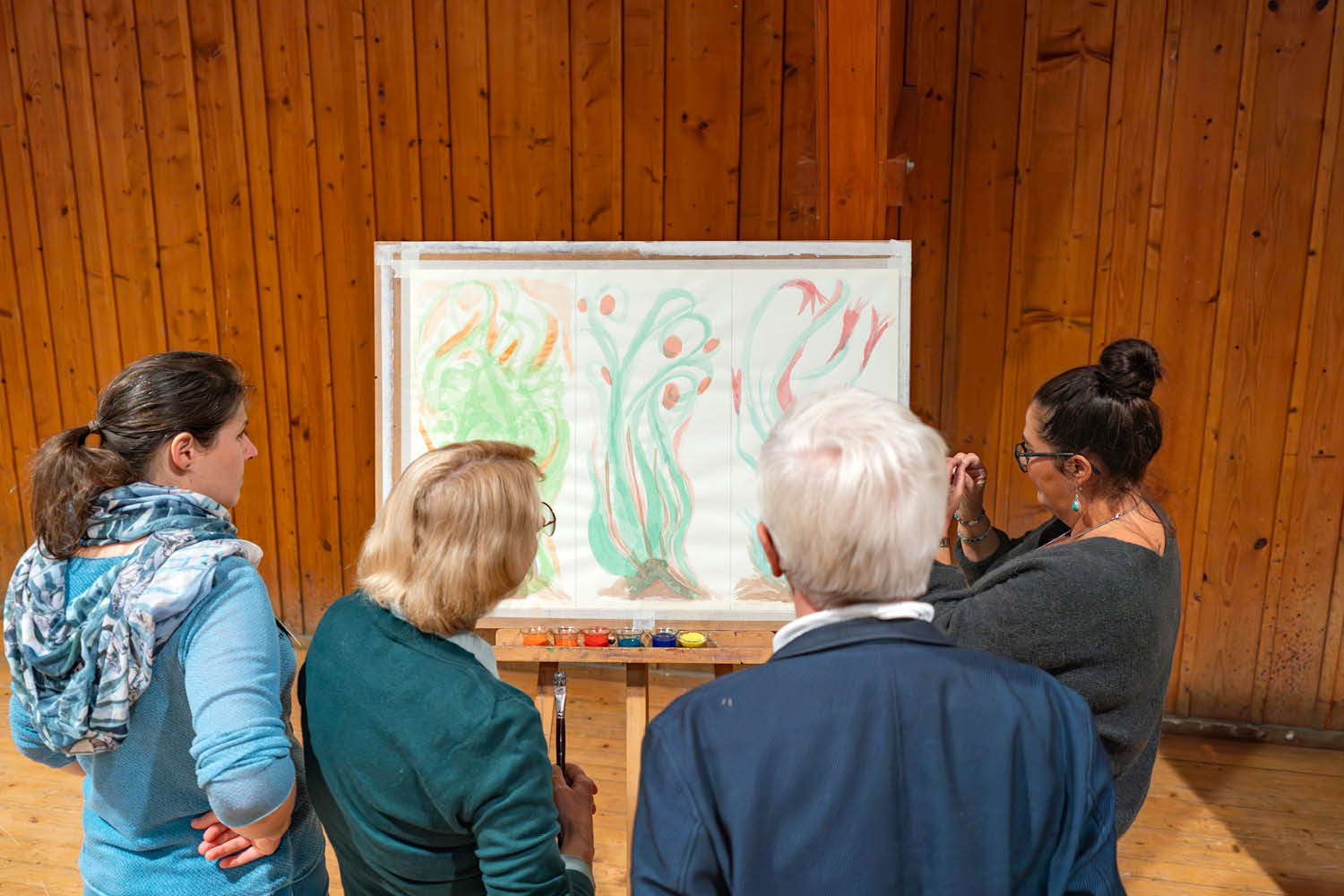
We Love What We Know
Many of us can relate to Eduardo Rincón’s story: seeking answers, a discouraged biologist turns to art, only to become a disappointed artist. Then he discovers Goethe, “someone who could weave science and art together,” and it transforms his work. One of his guides? The Oak. Mexico’s oak species are disappearing. Microbiologist Meinhard Simon is enthused that someone as far away as Mexico could discover Goethe as a scientist. He asks, “But what did this do to you?” “I began to feel responsible,” Eduardo answers, “I felt responsible to bring these trees back and work with many people.“
We hear this from Paul and Greta: when they present an objective analysis of crystals, they feel no real connection to it; it’s just data. But with the evaluative methods they feel a personal connection—and they feel responsible. I’ve experienced it in my work: we seem to fall in love with the details—the needles in a crystal, the colors on an Oak leaf. A sense of wonder becomes a sense of care.
Someone told me that we only protect what we love. I would expand that: we only love what we know. We take responsibility for what we feel connected to, and we feel connected to what we take time to understand and appreciate. Art opens you to doing this kind of science. Doing this kind of science changes you.
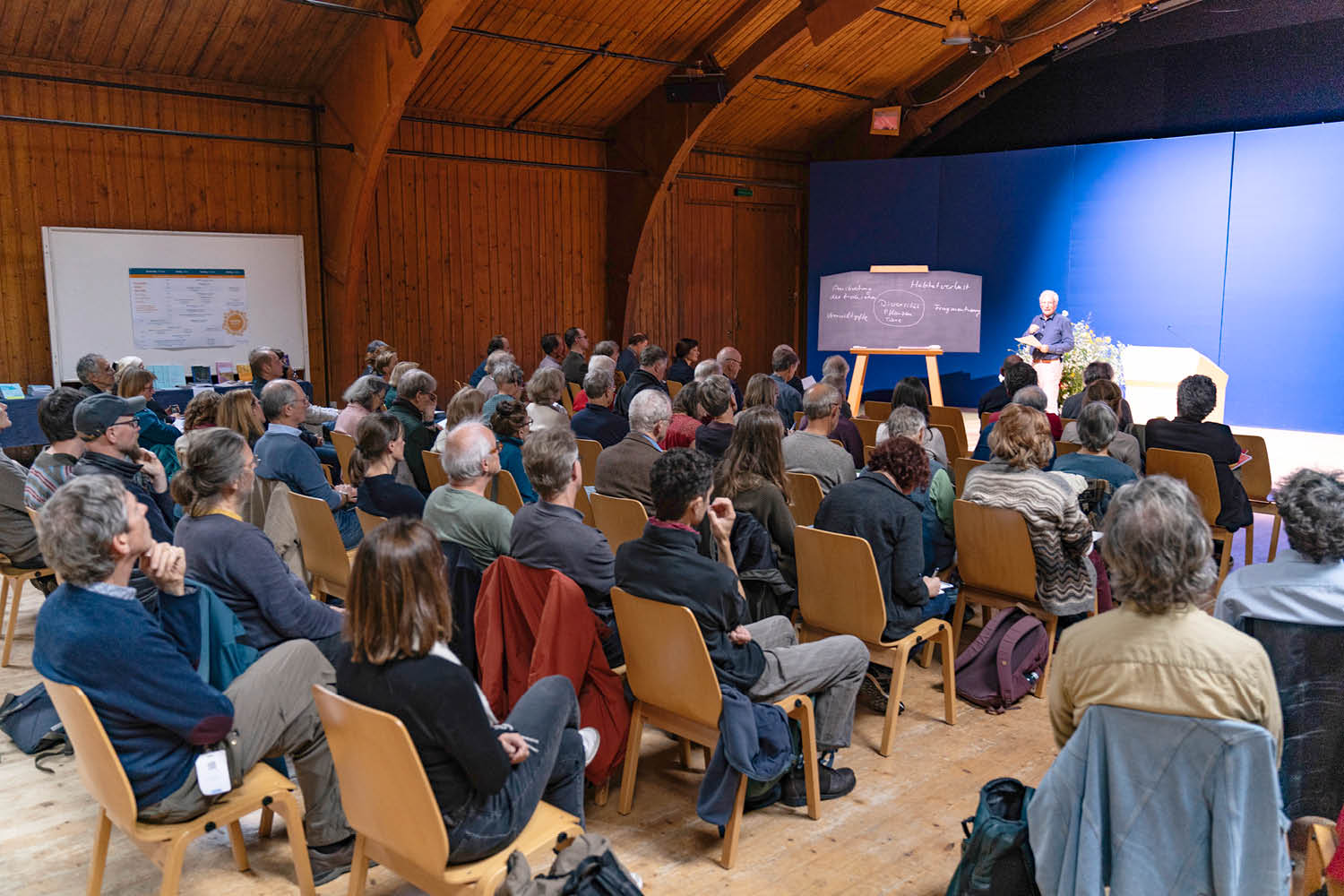
Does It Make a Difference?
If diversity strengthens identity, to what end? I don’t mean as a goal, I mean: diversity alone is chaos, but identity alone is isolation. When an oak is strong, it nourishes everything around it, literally. Strengthening our identity makes no sense unless our identity nourishes the diversity that shaped it.
Meinhard points out that the cultural landscape in Europe created more diversity than the wild forest alone—civilization can endanger biodiversity or enhance it. The effect of Goethean science in the social realm is an open question, but we find places all over the world that are acting in a Goetheanistic way and making a positive difference. We hear from Ahmed Elshazly, a scientist from Sekem in Egypt, where they ensure that the social organism is part of the ecosystem by convincing poor farmers to switch to healthier methods with money from carbon credits. Miriam Athmann works with colleagues in agroecosystems, where they combine research with farming and find ways to increase biodiversity. Entomologist Benjamin Bembé shows us a Christmas Tree farm where nothing lives but the trees—a sad and empty place. But he concludes with shining examples, like Sekem and Sikkim in India, where positive changes have a radiant effect on the region and beyond.
Is this related to Goethean Science? I believe so. Goetheanism offers not only a scientific research method but a way of seeing the world—a change in our thinking that enables a change in our doing. You don’t need to be a scientist to do that. You just need to be a caring human being.
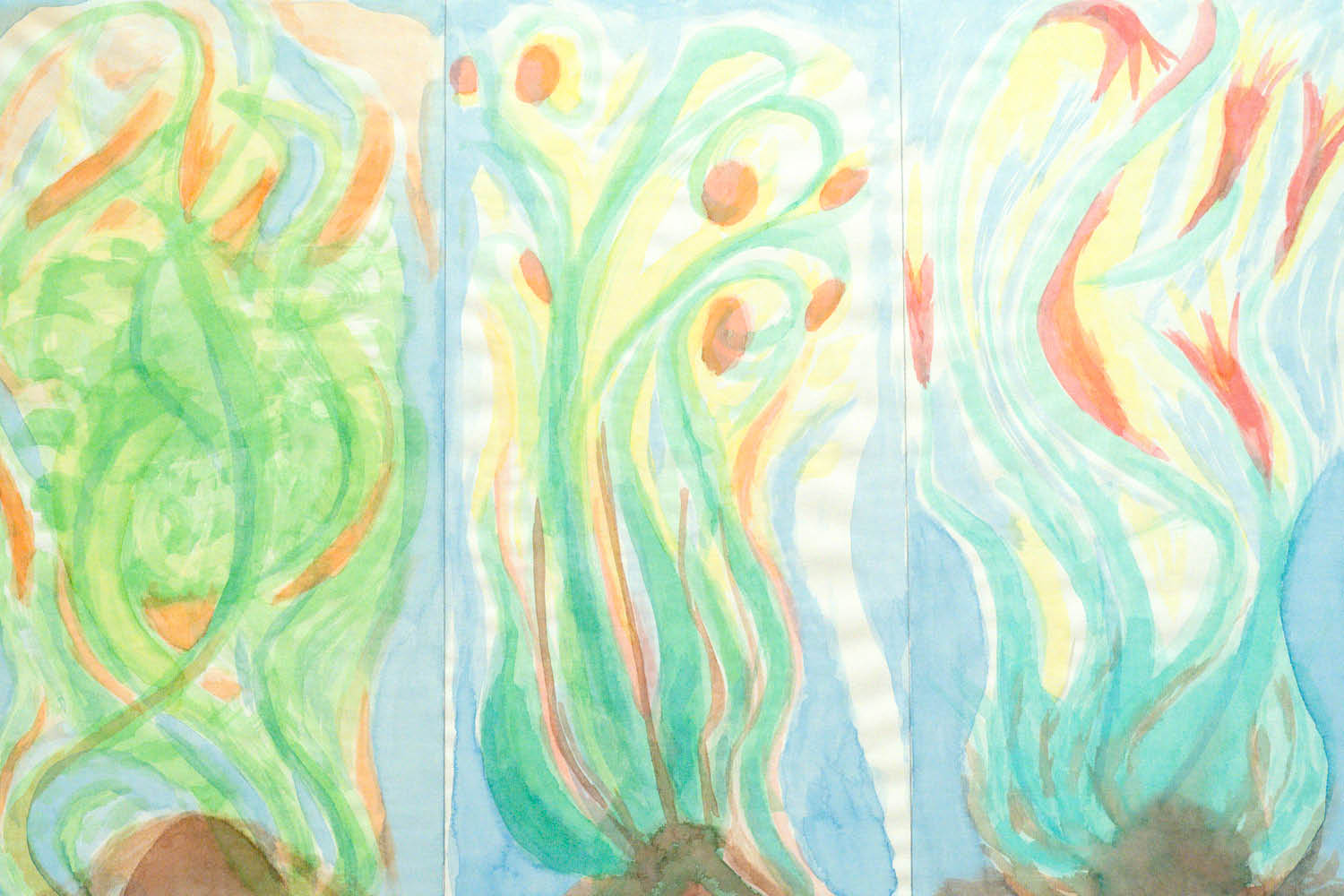
Becoming Diverse, Together
There are many paths to a Sun-led science and the methods are as diverse as the practitioners. “Diversity in the social realm means we have to endure each other,” a scientist friend tells me. In the closing, another fellow scientist tells us that the collaborative quality of the conference really touched him. “It was an intense sounding, and sometimes there was dissonance, but we could really listen to each other!” he exclaims in wonder—and a touch of delight. Is the capacity to listen an aspect of strengthened identity?
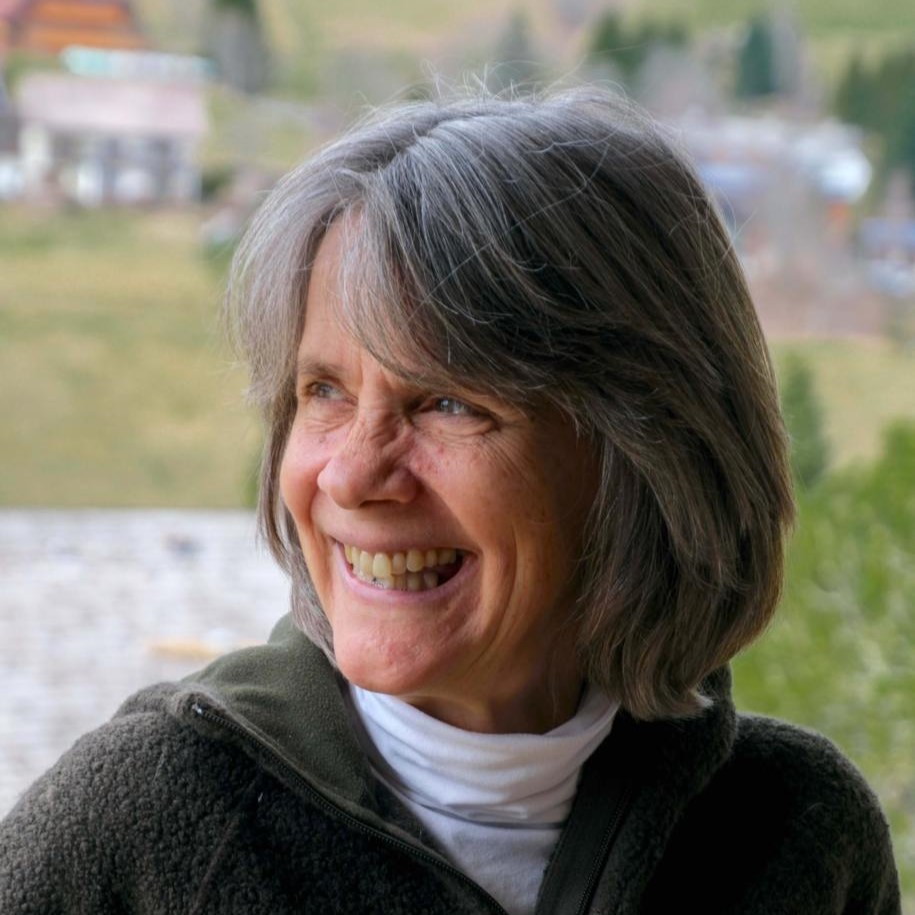
I wonder whether the “diversity strengthens identity” theme itself helped us be more accepting. Even if we don’t discuss it directly, it is always in the background, and we work with it in a truly Goetheanistic way. Doing this kind of science changes you. I feel it in the moments when I start to get annoyed with someone or something. My heart softens and opens up to a wider experience: people and things, in their ways, are part of the wholeness of the conference. What enables me to make this change? I’d like to think that painting and dancing and seashells and the Oak have something to do with it.
You can read excerpts from the talks given at Evolving Science 2024 in the Goetheanum Weekly Issue #46:
- Craig Holdrege, “Sympoiesis: From Thinking About to Being With”
- Eduardo Rincón, “When Science and Art Play Together”
- Meinhard Simon, “Nature is Our Mirror”
- Paul Doesburg and Greta Guglielmetti, “100 Years of Picture Forming Methods: Anthro-Niche or Influence?”
- Florianne Koechlin, “Communication Is the Foundation of Life”
- Stewart Lundy, “Individualizing Biodynamics: Soil and Soul”
- Jürgen Fritz, “The Preparations and the Soil Microbiome”
More Natural Science Section, Evolving Science 2024
Images Impressions from the autumn conference of the Natural Sciences Section Evolving Science 2024. Photos: Xue Li and Laura Liska





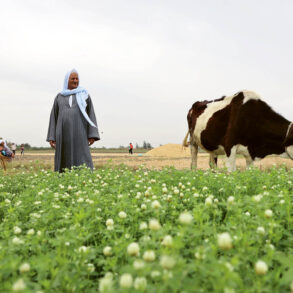

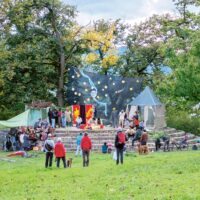


“But how does the diversity and identity that we find in plants live in us? Not just in our gut microbiome—that’s not what I mean. Where, exactly, are we different? Or, as one participant asks, “What is the shaping context for a human being?”
Wow Laura what a wonderful synopsis of what sounds like a dream gathering for Goetheanism ! a really wonderful result for one of the greatest forgotten scientist poets philosopher, that most humans could not clearly identify and less that 1% had actually ever read anything remotely Goetheanic. Although I suspect that both Goethe and Steiner recognised the more than substantial role that our body-brain is actually the ‘Gut’ rather than the head on our shoulders that is often lost in thought .. I suspect that our human cranial differences are far less important than the trillions of Gut bacteria/viruses we’ve evolved to sustain us .. the Gut-Brain keeps us alive each day rather the the one on our shoulders that seems to cause most of the difficulties in human health welfare and social relations. Hopefully this reply goes some way to pointing out just How different we are primarily in our micro-biome along with the Epi-Genome and the quality of our genetic heritage within the diverse environment we grow in ! As most travelers from foreign lands will have experienced the great bacterial variations that Dornach offers! Hopefully all made it home and have re-adapted to their local microbiological milieu ..